As your motorcycle racks up the miles, so do your tires. Cumulative wear and tear changes how your motorcycle handles over time, and the more worn your tires become, the more unpredictable your bike's handling can get. The last thing you want is to go down due to tires that have been pushed far past their wear limits.
You'll eventually need to invest in some fresh rubber for your two-wheeled steed. However, fresh motorcycle tires need to be broken in before they offer optimal performance for your bike. Riding on fresh rubber the same way you would on your old rubber could have unexpected and expensive consequences for you and your bike.
Proper tire break-in will save you the expensive embarrassment of wiping out on even the most basic of corners on your new tires. The following tips will also help you get the most out of your tires on the open road.
Fresh From the Tire Shop
When you pick up your fresh set of tires, the first thing you'll notice is how glossy or slick they appear. Although that glamorously glossy surface makes them worthy of being featured on a magazine cover, it also makes it more difficult for your tires to perform optimally out of the gate.
Most tire manufacturers use release agents to separate newly-formed tires from their molds. These agents tend to leave behind a glossy finish that's also slippery to the touch. Some manufacturers use Teflon-coated molds in place of traditional release agents, while others limit the use of release agents to the sidewalls. Even without the use of release agents, motorcycle tires can still take on a glossy sheen due to chemicals used in the curing process.
So getting rid of the leftover release agent should help break in your tire, right? With most things in life, there's a right way and a wrong way to do it. The wrong way involves using abrasives to scrub or sand off the tire's surface. Attacking your bike's new tires with a belt sander or an acetone wash will only make things worse, as you'll risk severe damage to your tires.
If you want to break in your tires the right way, start with a wipe-down of your tires using a clean, dry cloth. The next step involves a long-distance ride that'll help gradually warm up and scrub in your tires.
The First 100 Miles
During the first 100 miles of your motorcycle tires' life, focus on breaking them in gradually. As mentioned before, a long-distance ride provides the perfect opportunity to warm up and break in your tires properly. During the break-in period, your tires will lose their glossy sheen as the curing chemicals and release agents are worn off.
If you're not able to get out on the highway, you can use an empty parking lot and take slow figure-8 motions on your bike to safely scrub in your tires. Using tire warmers can help speed up the break-in process, but these are not an accessory that every rider has access to.
Breaking in your new tires during the first 100 miles comes with some important dos and don'ts. Keep the following in mind:
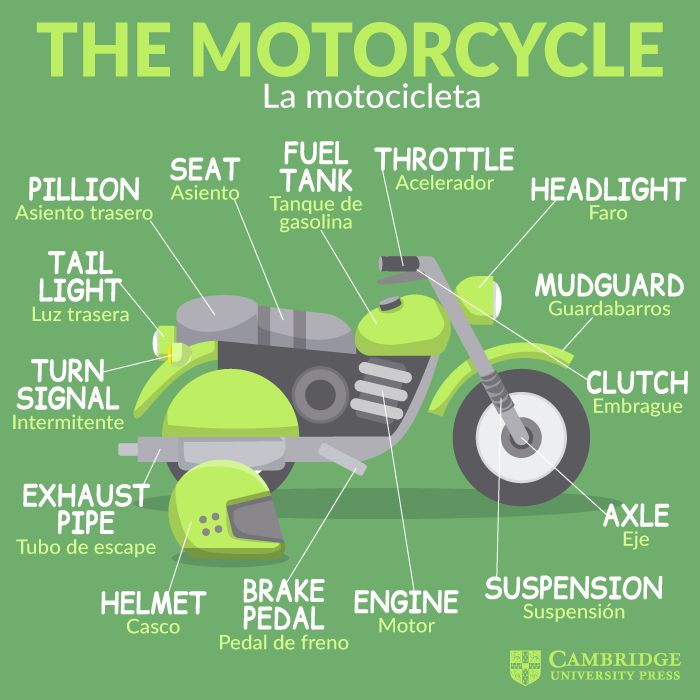 Riding in cold or rainy weather just means it'll take longer to properly break in your motorcycle tires. Riding on a warm spring or summer day helps your rubber get more grip sooner.
Riding in cold or rainy weather just means it'll take longer to properly break in your motorcycle tires. Riding on a warm spring or summer day helps your rubber get more grip sooner.Observing these tips can prevent you from taking a nasty tumble on slick, poorly-prepared tires.
Mile 101 and Beyond
Once you're past the 100-mile mark on your fresh, new tires, you'll be tempted to crack open the throttle and really put your tires to the test.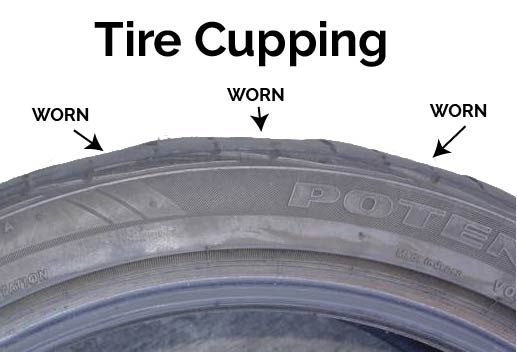 But not so fast — a gradual break-in is still best for your tires. Start by putting your motorcycle through its paces gradually, pushing further as you build up more confidence in your tires' performance.
But not so fast — a gradual break-in is still best for your tires. Start by putting your motorcycle through its paces gradually, pushing further as you build up more confidence in your tires' performance.
Some patches of tire may remain slippery after the break-in period ends. Fortunately, these patches will eventually go away as you continue riding, just as long as you follow the proper break-in tips.
Your tires are one of the most important parts of your motorcycle. After all, they're the only point of contact you have between yourself and the road below. Visit Bob's Cycle Supply and browse our inventory of tires and wheels for your motorcycle.
August 26, 2018
Do you know how to break in new motorcycle tyres that come with a glossy and slippery surface? They deserve to be treated with respect and caution.
I once had an embarrassing spill on new tyres right out in front of the dealer when I took charge of a test bike.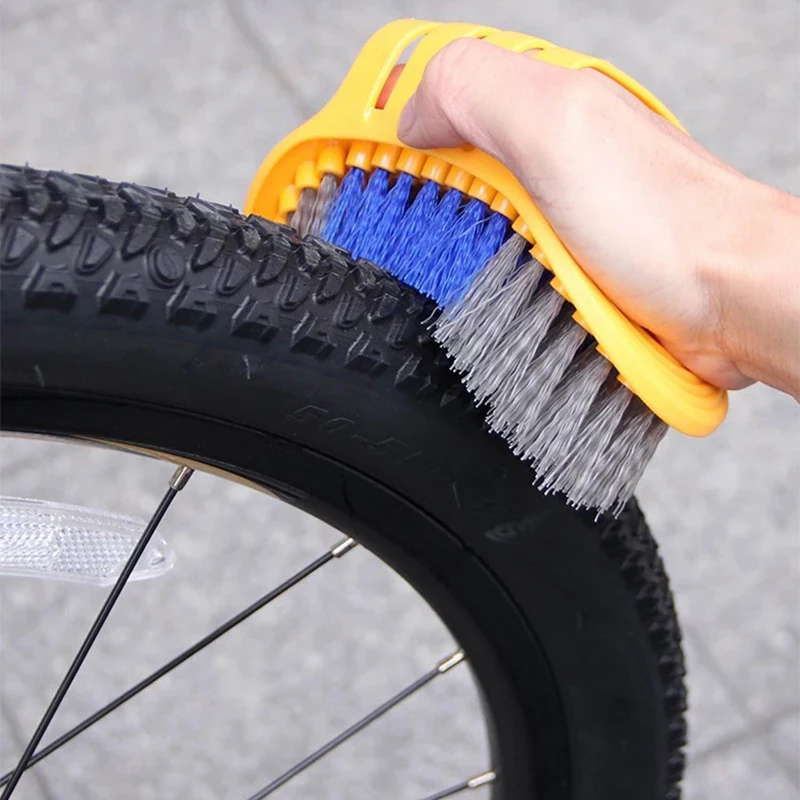
Usually test bikes are run in and some manufacturers even get racers to take them to the track for a few laps! But not on this occasion.
It seems strange that new tyres have a glossy surface, but there may be a few reasons for this.
Manufacturers used to use a slippery chemical called a mould release agent to get the rubber tyres to release cleanly from the mould. However, modern moulds have teflon coatings that obviate the need for a release agent.
Even if they don’t use a release agent, tyre manufacturers use chemicals in the curing process to make the rubber flow better and reduce defects in the surface and tread pattern. This results in slick or glossy surfaces, which applies to both motorcycle and car tyres (see a list of top car tyres in RatedRadarDetector).
New tyres look glossy
Apparently riders also like to see a new tyre looking glossy in the showroom, even though they can be slippery. So even if a tyre manufacturer like Dunlop, Continental or Pirelli don’t use a release agent, they still make their tyres look glossy for consumer appeal.
So how do you break them in and get rid of the slippery gloss? Well, some tyre fitters use sanders to scuff up the surface or wash them with an acetone solution to neutralise the oily release agent or wipe them with a cloth to get rid of any slippery fitting lubricant they may have spilt on the tyre surface.
But tyre manufacturers do not recommend washing or sanding your tyres. They go to great lengths to design and engineer tyre treads, so the last thing you should do is attack the tread surface with a belt sander! It is also a bit risky using any chemical solution on a tyre as you do not know if it will be applied evenly and how it will react with the tyre. A wipe with a dry cloth is fine. Notice that race bikes leave the pits with shiny new tyres that have not been belt-sanded or washed with any chemicals.
The best way to break in a tyre, lose that gloss and become sticky is to heat it up and the most effective way to heat a tyre is over a long-distance high-speed highway ride.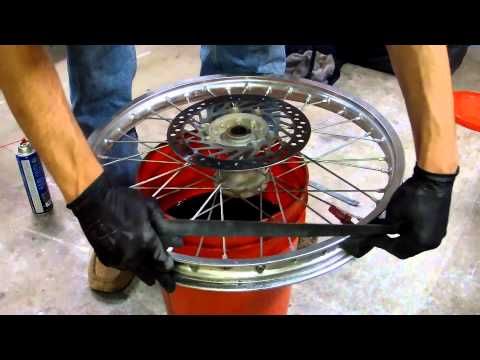 Racers don’t have that luxury, so they use tyre warmers which they apply about an hour before a race to warm the tyre slowly and evenly.
Racers don’t have that luxury, so they use tyre warmers which they apply about an hour before a race to warm the tyre slowly and evenly.
Most riders seem to think that weaving around on the road like racers on a warm-up lap is the best way to “scuff-up” the tread. However, that is very risky as you could slip over on the glossy surface. Remember, racers are weaving around to keep the heat in the tyre after it has already been warmed up in the garage.
Heat your tyres firstSince most riders don’t have access to tyre warmers, tyre manufacturers suggest a long ride of up to 160-200km to heat the tyres, depending on ambient temperatures. Despite the fact that most racers weave around on warmed-up tyres, you actually don’t need to lean the bike over on to the new and glossy surface to heat up that part of the tyre. Acceleration and braking is more effective as it puts stress on the tyre carcass which heats up the whole tyre, not just the bit touching the road. But again, you should get the tyre hot before any abrupt throttle or brake application.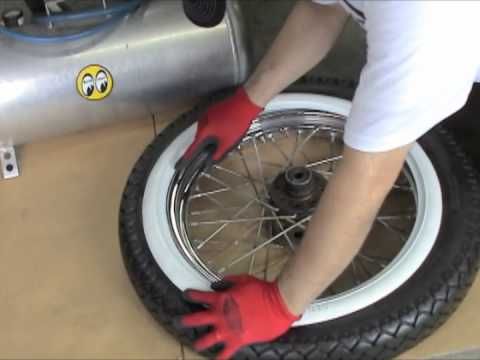
Don’t think in terms of “scrubbing in” your tyres, but think about heating them up. The distance required to get sufficient heat into them can be dependant on the type of bike, the ambient temperature, the temperature of the road and the road surface.
Before you can start to push the lean limits, get off your bike and feel the tyre temperature with your hand. If it’s hot, you can gradually increase acceleration and braking to get it really hot. Then you should be right to start leaning it over.
Sounds over-cautious? You betcha! You don’t want to be embarrassed, injured, or left with a damaged bike like I did.
Get the best motorbike news, rumors, deals and events each week. We will keep you up to date on the cool stuff only. No crap, we promise.
ShareTweetPinShareSubmitEmail
Freelance writer for various national magazines and websites, plus founder of MotorbikeWriter.com. I started MotorbikeWriter to bring the world all the daily motorcycle news, views, reviews and lifestyle happenings.
How to choose the best tire for a motorcycle?
The most important point when choosing is that the tire should be the right size for your motorcycle, with the right speed and load. Choose the tires recommended by your motorcycle manufacturers according to your needs.
Sports tires are a good example - a lot of people think they should buy the stickiest racing tire they can, but unless you're on the track, there's little point in having a tire like this. On the road or in the city, it will not heat up properly, so it will potentially not perform as well as a more road oriented tire, and may not be safe in wet weather. nine0005
When choosing a tire, consider durability, performance, all-weather performance, the types of roads you drive, the luggage you take, and even the climate. There is no better all-season motorcycle tire, although technology has advanced so far in the past few years that you can expect good grip on wet and dry roads, as well as longer life for most modern road tires.
What makes a good tire for different conditions such as dry, rain, snow, etc.? nine0004
The functionality of a good motorcycle tire depends entirely on its design, composition and tread pattern. Innovations in the materials used are developing rapidly. Thanks to new components, motorcycle tire manufacturers have many options, both in carcass design and rubber compound. The traditional balance of a hard compound for long mileage and a soft compound for moto traction can be changed with additional components that make the rubber behave in completely different ways. nine0005
The tread design is critical for water evacuation as well as traction during acceleration and deceleration to help generate heat in the tire and improve performance.
For off-road motorcycle tires, traction on loose surfaces is important, as well as durability and mud clearance. Currently, off-road tires are becoming a fashionable trend and are installed on many road motorcycles.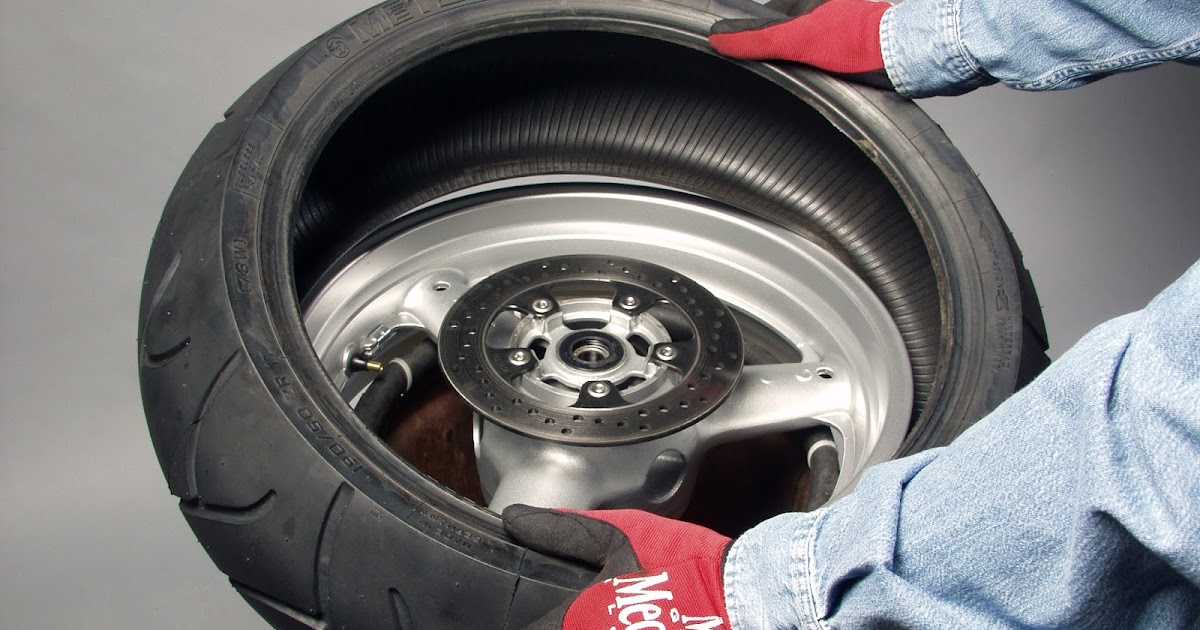 Be careful if you ride on pavement - more extreme tires will reduce traction on hard surfaces. nine0005
Be careful if you ride on pavement - more extreme tires will reduce traction on hard surfaces. nine0005
What does the writing on the side of my tire mean?
In this picture, the tire is 180/55 ZR17 (73 W), which means that its width is 180 mm and the profile height is 55% of the width, i.e. 99 mm. 17 refers to the rim size - 17 inches - while 71W is for speed and load capacity; 365 kg and (270 km / h). Since the speed index is in parentheses, this means that the tire is capable of going faster than this figure, but if there were no parentheses, this would mean that 270 km / h was the maximum speed. "M/C" simply means that the tire is designed for use on a motorcycle. You can also see the direction of rotation - if the tire is installed incorrectly, its use will not be effective, moreover, it can lead to an accident. nine0005
The maximum load - here it is 365 kg - is the maximum load that the tire can support at standard pressure - in this case 2. 90 bar. This is not necessarily the recommended pressure for your motorcycle. Therefore, maintain tire pressure according to the owner's manual or tire manufacturer's recommendations for this motorcycle.
90 bar. This is not necessarily the recommended pressure for your motorcycle. Therefore, maintain tire pressure according to the owner's manual or tire manufacturer's recommendations for this motorcycle.
How can I find out how old my tires are?
The production date of any tire manufactured since 2000 can be found on one of the sidewalls at the end of the "DOT" (Department of Transportation) code. The last four digits - usually after other letters and numbers - indicate the production date. nine0005
The first two are the week it was made, and the last two are the year. So this tire was made in the 9th week of 2017.
Tires used to have a three-digit date code, as it was believed that none of them would be used for more than ten years. But given the markings, it was very difficult to tell if the rubber code 327 was made in week 32, 1997, or week 32, 1987. Just be aware that a 3-digit tire is now too old.
Can I install a camera with a tubeless tire?
Yes, but it's worth checking that there are no loose labels on the inside of the tire that could cause camera problems.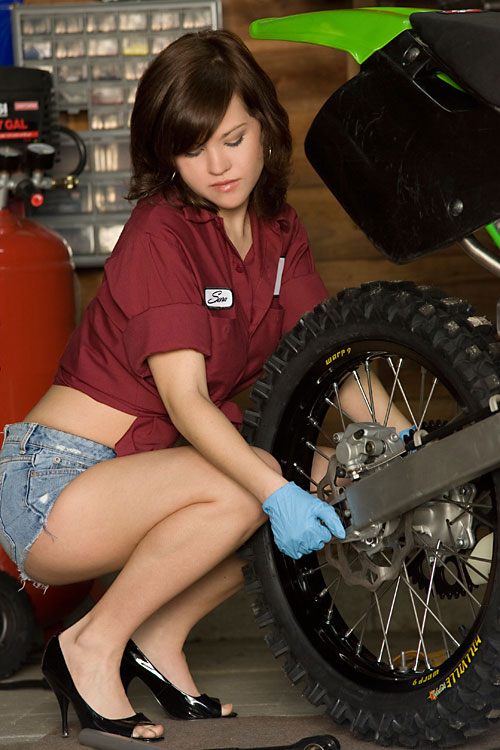
Does the tire speed index change when a tube is installed?
Installing a tube does not affect tire speed up to maximum speed (210 km/h). At speeds above 210 km/h, tires without tubes are used.
What is the difference between tube and tubeless tires? nine0004
Briefly, one layer of material inside the tire carcass. (sealed)
All materials used in the tire are characterized by performance - a balance of grip, flexibility and durability. It may surprise you that the ideal rubber compound is actually porous, but then air will slowly escape. In the past, this problem was solved by installing a tube with a completely different rubber compound and had little effect on the overall performance of the tire.
The biggest disadvantage of this design is that if it gets punctured, the chamber will instantly deflate and the air will quickly escape through the spoke holes on the wheel. Rapid tire deflation on any vehicle creates an increased hazard, especially when driving at speed. nine0005
nine0005
A tubeless tire using a liner inside the tire carcass, designed for safety as well as weight savings.
Instead of making tube and tubeless tires in the same size, most companies now only make tubeless tires and recommend installing tubes when needed.
Why are new tires slippery?
The final part of tire manufacturing is the curing process - the carcass containing all the component materials is usually placed in a very hot mold and cured under high pressure for about thirty minutes. To aid in the removal of the cured tire from the mold, a small amount of release agent is applied prior to starting the process. A thin residue of this material remains on the surface of the tyre, which needs to be cleaned up during the service life of the new rubber. nine0005
Some manufacturers have already bypassed this process, and Continental, for example, has developed a unique way to modify premium molds that eliminates the need for any mold release agents; the finish is slightly rough and provides instant traction when the tire is first used - it's called "Traction Skin".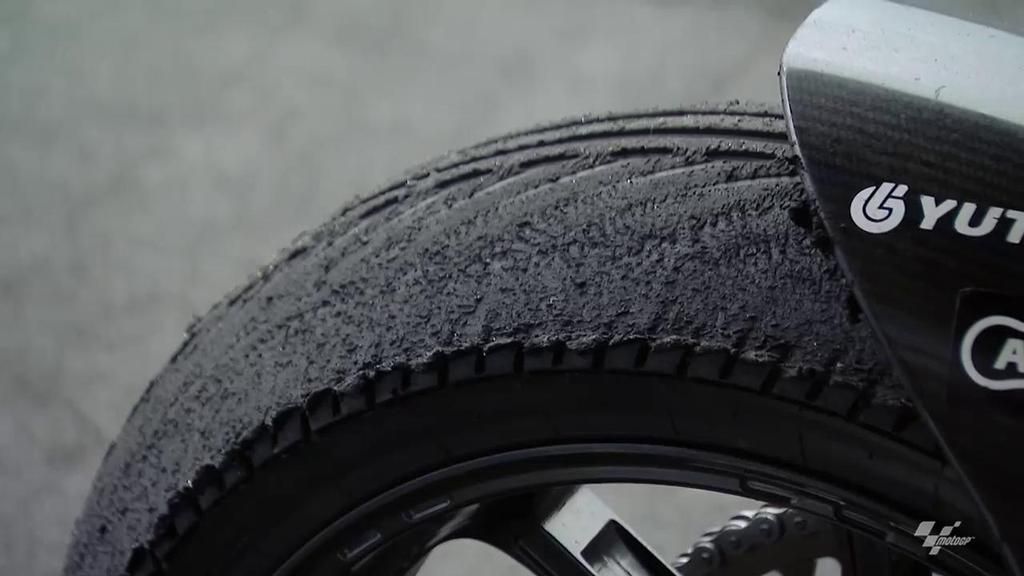
But a new tire will always be significantly different from an old, worn one, so we still recommend driving with caution at first, increasing speed and lean angle over time. nine0005
If tires have low mileage, how long can they be used?
As long as the tire is stored in a cool, dry place away from direct sunlight, chemicals and other ozone exposure, they will last a long time. Tires age slowly. For example, motorcycle tires from leading manufacturers Michelin, Mitas, Continental. Metzeler, Pirelli in the European market are sold and used as unconditionally new tires for up to five years after the date of manufacture. nine0005
The warranty period for tires starts from the date of purchase, regardless of the date of manufacture. Manufacturers recommend replacing any tires that were manufactured more than ten years after their date of manufacture, but do not recommend buying or running used tires with an unknown history.
Do I need to put the motorcycle on a stand when I am not using it for a long time?
Bikers sometimes worry that they will get warped tires if they leave the motorcycle standing for a long time.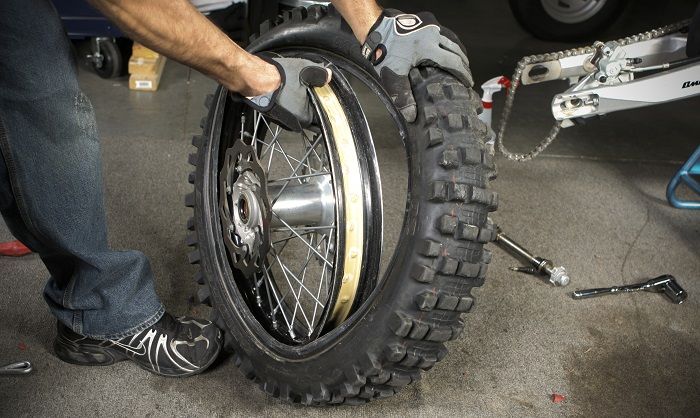 In fact, the most important thing to do is just keep them properly inflated. With the correct tire pressure, there is no need to hang the motorcycle. nine0005
In fact, the most important thing to do is just keep them properly inflated. With the correct tire pressure, there is no need to hang the motorcycle. nine0005
How do I check the tire pressure on my motorcycle?
Check the pressure when the tires are cold. When you ride your motorcycle on the road, the tire warms up and can increase to about 0.5 bar - do not check the tire pressure when they are warm, as they will not be under-inflated the next time you ride.
Important! Use a good quality offline pressure gauge, not the one on your pump or compressor.
What tire pressure should I use on my motorcycle? nine0004
Your motorcycle owner's manual will list the recommended pressure, and sometimes this information is also printed on the motorcycle frame. Use these guidelines, then test your motorcycle extensively. Based on the heat of the rubber and the load (weight) of the motorcycle, determine the safe pressure for a comfortable ride.
Incorrect tire pressure will shorten tire life and may affect handling. If you use a tire with low pressure, the contact patch may be reduced rather than enlarged because the middle part of the tire is deformed by being lifted by the road. Also, rubber easily overheats and can be damaged. If you overinflate your tires, they will wear unevenly, handle poorly, and not deliver a comfortable ride. nine0005
Should I reduce tire pressure in wet and cool weather?
No, tires are designed to operate at a certain pressure. Some people depressurize their tires in winter, believing they will hold up better. While driving, the tires will heat up, but the contact patch will be reduced due to deformation, and the tread pattern will work less efficiently. Tires will wear out faster and are moreover considered potentially dangerous.
What is the difference between bias and radial tires?
Diagonal tires have a relatively simple design with strong sidewalls and are particularly suitable for off-road use as they carry loads well.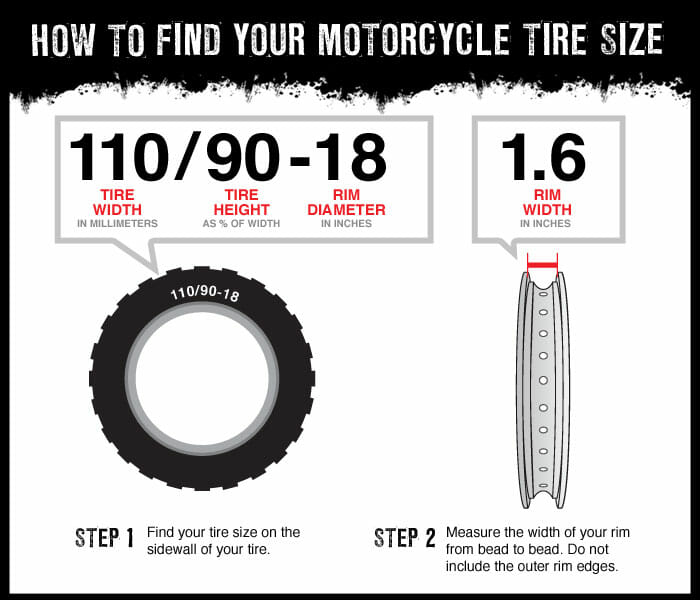 They can be used at speeds up to 210 km/h
They can be used at speeds up to 210 km/h
Radial tires, marked with an "R" in the side designation, have a cord that is at 90° to the rolling direction and a breaker that is at an angle between 0 and 25 ° away from him. The breaker that sits under the tread (which is what you see through really badly worn tires) adds stability and enables much higher speeds as the deformation caused by the centripetal force is greatly reduced. nine0005
Because the sidewalls are thinner, the tire heats up less, so durability at high speeds is improved. Modern motorcycles are focused on the use of radial tires. Radial tires increase by only a few millimeters at speed. Diagonal tire at a speed of 210 km / h can increase up to 20 mm!
Another well-known tire design is the "diagonal belt" - in fact it is a cross bar with a breaker under the tread for additional support, which is suitable for use up to 240 km/h. These tires are marked with the letter "B"
Is it safe to repair motorcycle tires after a puncture?
Manufacturers recommendation
| Tire speed index | to J | J to V | over V |
| Maximum speed per hour | 100 km/h | up to 240 km/h | over 240km/h |
| Maximum damage diameter | 6mm | 3mm | Repair not allowed |
| damage |
|
| |
| Max number of repairs | 2 | 1 | 0 |
Repair work must be carried out using a plug inserted from the inside of the tire and cured.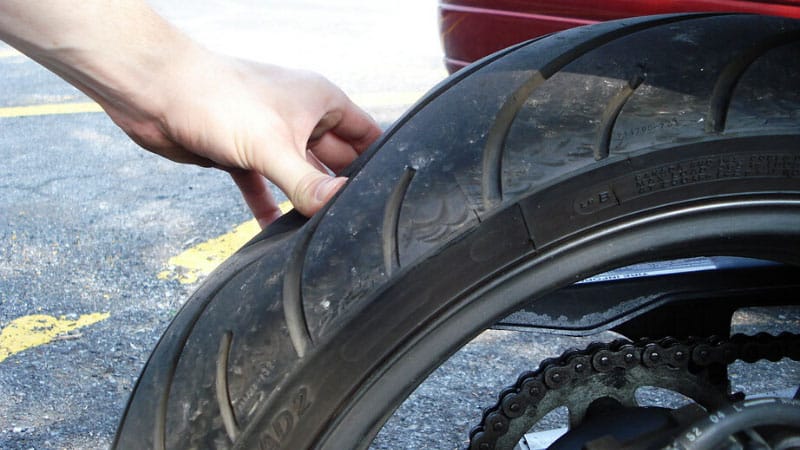
Only the center part of the tire (tread part) is repairable, the bead part of the tire cannot be repaired. It is not recommended to try to repair a tire with less than 0.8 mm of tread - the best solution is to buy a new one.
Repairing a tire on the side of the road using a repair kit is considered temporary, which is used only to drive home. nine0005
Falling on a motorcycle is extremely dangerous. Since your tires are everything that connects you to the road, manufacturers recommend that you pay special attention to this element of the motorcycle.
Buy motorcycles from global manufacturers https://zhakom.by
There is not always a way to call a tow truck, and driving on a flat tire, “chewing” the rubber and killing the rim is at least uncomfortable.
The very first replacement of rubber on a motorcycle or scooter gives reason to think - what is better in terms of quick repairs: tubeless ones that do not require wheel disassembly to eliminate a puncture, but leave the rider helpless if, along with damage, it “led” and flattened the edge of the disc? Or chambers - allowing sealing almost ring breaks (if only there were enough patches), but requiring the removal of rubber from the rim for this? The unequivocal answer is no. Few classics, straights or tourers today remain "loyal" to tube rubber models: tubeless tires are lighter, softer, warm up and cool down faster thanks to simplified heat transfer. In sports, more precisely - enduro and motocross, chamber - on the contrary, prevail: only spoked wheels can "play", withstanding strong alternating loads during landings and impacts. nine0005
Few classics, straights or tourers today remain "loyal" to tube rubber models: tubeless tires are lighter, softer, warm up and cool down faster thanks to simplified heat transfer. In sports, more precisely - enduro and motocross, chamber - on the contrary, prevail: only spoked wheels can "play", withstanding strong alternating loads during landings and impacts. nine0005
The nuance is that a tire with a chamber can be put on any spoked or cast disc, and a tubeless one can only be placed on a cast one, because only it can ensure tightness. Tube – can be installed in a tubeless tire as an emergency measure. In case of major damage to the sidewall, cracks or curvature of the edges of the rim, this will make it possible, after pumping up the wheel, to reach the nearest tire service (and there already - straightening, balancing and other maintenance according to the rules). True, for such a focus, it is advisable to take a camera with a face value one less than the diameter of the disk, otherwise it will create folds inside that will rub for a couple of hundred kilometers. The resource of such a “treatment” is large - until the next puncture, like a new one. nine0005
The resource of such a “treatment” is large - until the next puncture, like a new one. nine0005
It depends on the magnitude of the damage whether it will be possible to eliminate it on your own, or whether you will have to “surrender” to the motorized tow truck. In tubeless - holes up to 5–6 mm are patched, in chambers - as much as there is enough glue and patches, the main thing is the condition of the tire. To determine the extent of the disaster - find a place where you can safely stop without violating traffic rules (where it is prohibited - you will have to sacrifice tires and drive on). nine0005
If the wheel deflates slowly, and the object that pierced it is still inside, you can try to carefully drive to the tire shop. A completely deflated "pancake" will have to be resuscitated on the spot, or - remove the wheel and take it to the service.
To find a hole in a tubeless tire, if it is very thin and not immediately visible, the wheel must be pumped up, slowly pouring water - bubbles will go.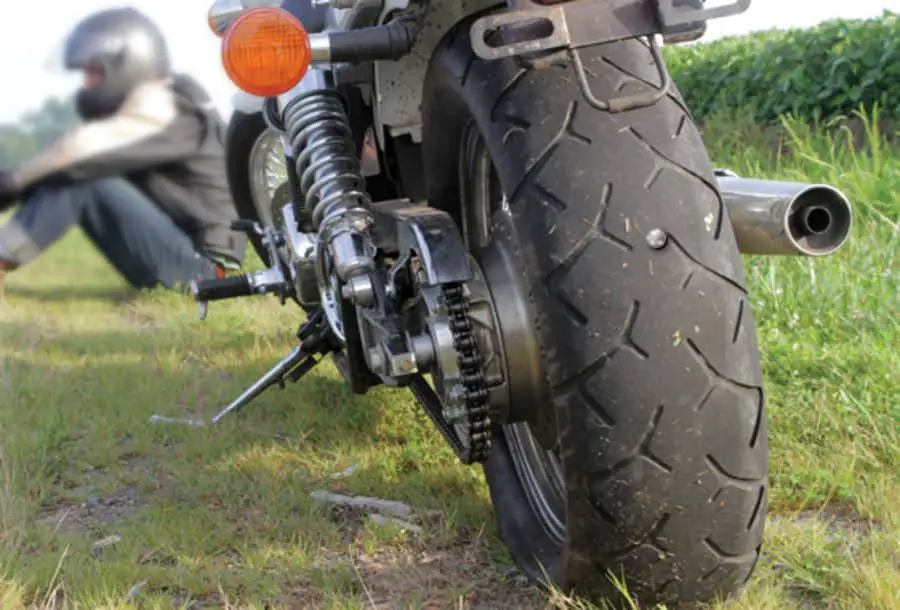 In place, tubeless tubes can be “harnessed”, or filled with sealant inside, without removing from the motorcycle. nine0005
In place, tubeless tubes can be “harnessed”, or filled with sealant inside, without removing from the motorcycle. nine0005
With the second type of tires - more difficult. A torn balloon must be removed from the tire to detect a defect and seal. In a good way, the wheel must be removed from the motorcycle and disassembled on a clean, flat, hard base. Suppose such a “patch” can be provided even off-road, but how to remove the wheel on a motorcycle if it does not have a central stand? And shooting is not required. The motor must be carefully laid on its side, after making sure that the faucet is closed, gasoline does not flow out through the tank cap (antifreeze does not flow from the tank if the motor is “dropsy”), and removing the plastic or wardrobe trunk with fragile contents (if any). nine0005
You will have to unscrew the wheel from the motorcycle only if you need to replace the tire, or it is decided to patch the tubeless tube with a “fungus”. In the absence of a central stand, this will also have to be done on a lying bike, or - make this stand from improvised materials (bricks, stump, car jack), placing them under the crankcase protection from below, the central tube of the frame, the duplex jumper (but not under the plastic, itself engine crankcase or attachments!), under both footrests - if they are not folding, or - under the pendulum. Before removing the rear wheel on a motorcycle, the front fork must be loaded with something, or an even higher lining is made. nine0005
Before removing the rear wheel on a motorcycle, the front fork must be loaded with something, or an even higher lining is made. nine0005
In a motorcycle tire fitting shop, tubeless tubes are repaired by cold vulcanization. They are removed, disassembled, the puncture site is cleaned from the inside, degreased, lubricated with glue and a calibrated “fungus” patch is inserted into the hole from the inside. The fungus itself is a thin plate of rubber with a “leg” tube in the center. The leg - by the guide wire is dragged through the hole of the damage, and the "hat" seals it.
After half an hour - you can put the tire back. The reliability of such a repair is high, the patch does not cause a significant imbalance, the service life of a sealed tire does not decrease. nine0005
This method is also applicable on the road, the main thing is to have the necessary equipment and materials with you:

The fungus repair procedure does not require much experience. The main thing is to keep it clean, fully clean the place where the patch fits, let the glue dry slightly to a dull finish and press (roll) the surface of the fungus with high quality, expelling all the air between the layers. If necessary, you can degrease the place before gluing with gasoline, but without the rest of the above, it will not be possible to fully carry out repairs. nine0005
The compressor is sometimes replaced by a small cylinder of compressed air or carbon dioxide. Unlike a mechanical pump, it will immediately create a “throw” of pressure, pressing the tire beads against the rim flanges (in emergency cases, even a fire extinguisher was used to pump flat tubeless wheels). When connecting the compressor, start the bike's engine before you start inflating the tire - let it idle. Otherwise, the motor can "land" the battery, and you will not start. nine0005
Otherwise, the motor can "land" the battery, and you will not start. nine0005
Manometer - needed for control. It is undesirable to pump over the repaired tire. It is recommended to "inflate" 0.2 atmospheres less than the nominal value. Inflating too little is also bad: a flat tire has a larger contact patch with the road, so the place of a fresh patch will deform more.
“Burning” a tubeless tube and sealing its internal cavity through a nipple are quick, simple methods that do not require special skills. To repair the damage, you only need the materials themselves, and how to pump up the wheel. nine0005
Now in Moscow, and not only, 6-5 varieties of cans with a sealant are sold - a quickly hardening "liquid rubber", with a volume of 800 to 250 ml.
Applying "Anti-Puncture" is simple: put a tube with a fitting on the nipple of the camera, turn the can over, and hold the button according to the instructions. Then - pump up the wheel, cleaning the nipple from the foam, roll it, making a full turn to distribute it. nine0005
Then - pump up the wheel, cleaning the nipple from the foam, roll it, making a full turn to distribute it. nine0005
The sealant is blown out with air into the puncture hole and clogs it, solidifying. After 20 minutes - you can go. Reliability of repair is high. Resource - until the next puncture.
If you have a compressor, start immediately pumping up the wheel, so it will be easier to work with a puncture, insert a patch, and it will swell faster.
Procedure:

You can go in 5 minutes, you just need to make sure that it doesn’t descend anywhere else.
Outwardly identical, repair kits for harnessing wheels can differ in price by almost half. This variation is explained by different configurations - one will have only three items, the other - six or seven.
A complete tubeless tire repair kit contains:
Regardless of the cost, you need to choose a kit in which the harnesses will be reinforced, and the awl - with a deep spiral winding (notch), and not a “needle file”.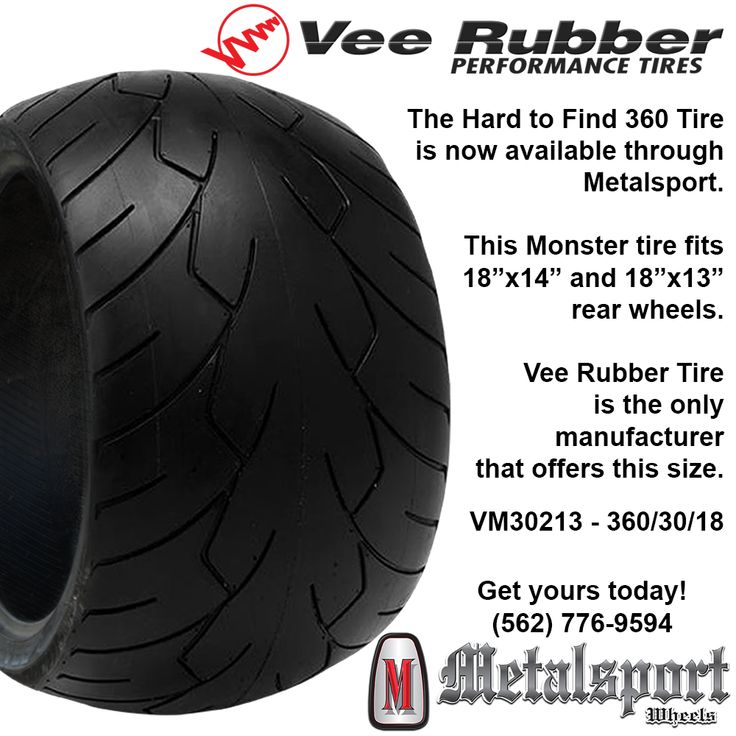 Inserting a flagellum is sometimes easier with a regular thin screwdriver. If there is no glue in the kit, or it has dried up, the flagellum is moistened with gasoline. nine0005
Inserting a flagellum is sometimes easier with a regular thin screwdriver. If there is no glue in the kit, or it has dried up, the flagellum is moistened with gasoline. nine0005
At motorcycle service stations and car services, holes in the chambers are closed by hot vulcanization: a layer of raw rubber is applied to the cleaned, fat-free puncture site and, after squeezing it well, it is heated with a special “iron”. Iron - burns, layers - are fused into a single whole. Reliability of repair is high. The resource will be almost like a new one.
Cold vulcanization (patching) - used if the workshop is not equipped with a vulcanizer. In this case, the quality of the service and the reliability of the repair will depend on the accuracy of the master. For the convenience of gluing, the camera is completely removed in the service, but, I repeat, this is not necessary. It can be repaired on the spot in the same way (there are no other options except for replacing the camera), but without removing it from the motorcycle.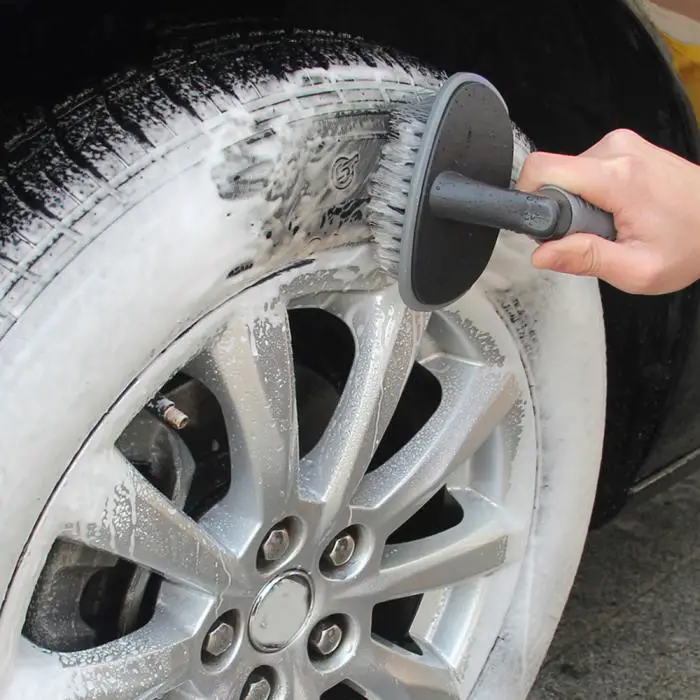 nine0005
nine0005
This can only be done if you have two metal mounting blades. At least one, the second can be replaced with another flat tool. You can still disassemble the wheel with a wide screwdriver and a “family” key wrapped with electrical tape. But this is only as a last resort, otherwise you can damage the cord.
Sequence of work:
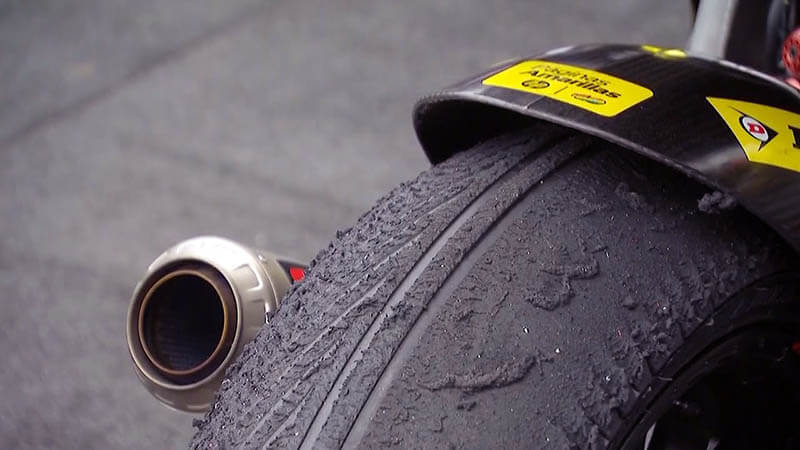 Let the glue dry for a minute. nine0281
Let the glue dry for a minute. nine0281 The fencing must be carried out twice as carefully and more slowly than dismantling, lubricate the side with water or soap, “help” more with your hands, otherwise there is a risk of picking up the edge of the chamber with a spatula and tearing it.
Important! If the wheels of the motorcycle are equipped with tow bars - before pressing the tire bead from the rim, you need to loosen this tow bar! But do not unscrew the nut completely, do not disassemble to the end.
A standard “first aid kit” (a set for repairing classic motor rubber) contains only patches and glue, so it is advisable to supplement it yourself with a piece of “skin” or a needle file. You can degrease with gasoline, or apply a little glue first and wipe off immediately, rolling up the dust with it.
Now there is no shortage of specialized motorcycle workshops not only in Moscow - in all major cities there are motorcycle helpers who help motorcyclists directly on the track, or tow to where you can quickly change the camera, or patch the tubeless correctly, so that there is no trace left. Where there is a guarantee. nine0005
Self-replacement of a tire on a motorcycle requires a certain physical condition, and for the first time - a “kilometer of nerves”. At the service station, instead of you, automation will “sweat”, which will not lock up the board and will not scratch the disc coating with a spatula. The main thing is to do it quickly (if you need to go urgently, the price sometimes does not matter).
At the service station, instead of you, automation will “sweat”, which will not lock up the board and will not scratch the disc coating with a spatula. The main thing is to do it quickly (if you need to go urgently, the price sometimes does not matter).
Repair at the service - may be the only possible one if, due to driving on a flat tire, the tire nipple is turned and torn off. Especially if he flew off and got lost, but there is no spare. In mototiremontazhke - there is always a set of consumables for any wheel diameter. In the same place, in extreme cases, you can buy a new tire, or a used dokatka. nine0005
In addition to the patch, for normal operation of the wheel, balancing must be ensured. This is generally a useful procedure during any change of rubber, otherwise if there is a strong imbalance, the wheel bearing will inevitably break due to vibrations, and the hands will quickly get tired and “buzz” after long rides.
The first couple of tens of kilometers - do not drive, go at the speed of the flow.